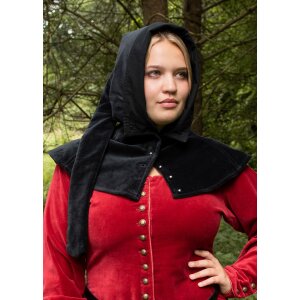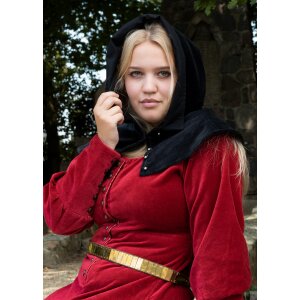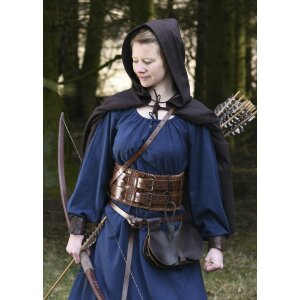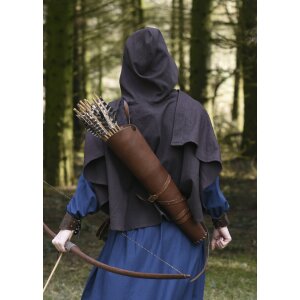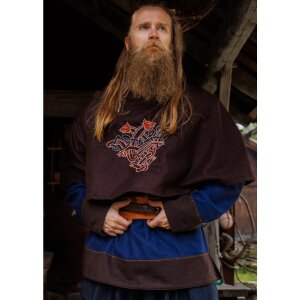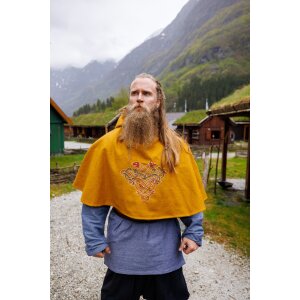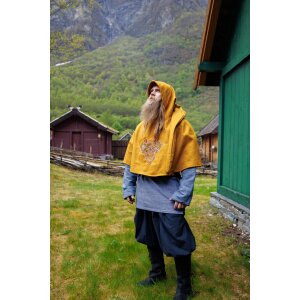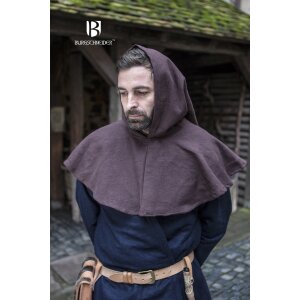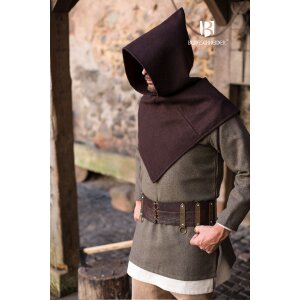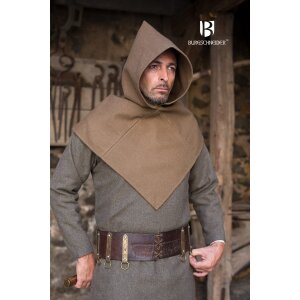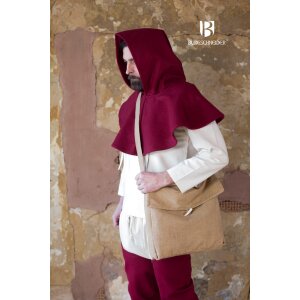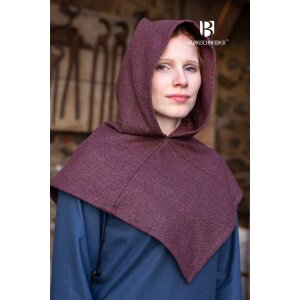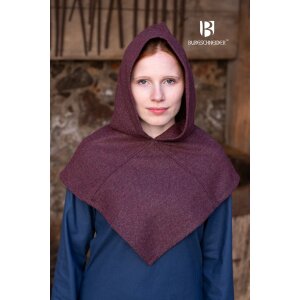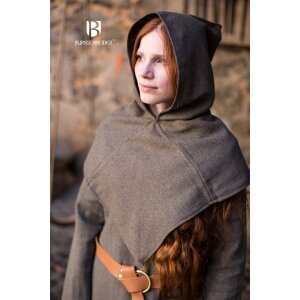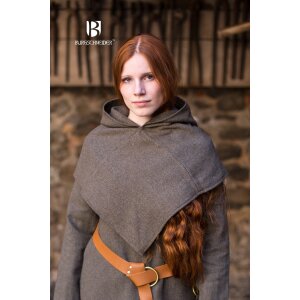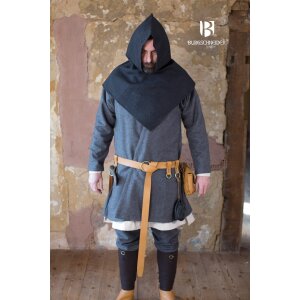Cotton and Wool Chaperon for medieval outfits and reenactment
From Vikings to the Middle Ages - The Gugel through the ages
So-called Gugels are head coverings, which not only cover the hair, but also the neck and shoulder area. You slip your head through the opening, the Gugel then rests on your shoulders and provides cozy warmth on cold evenings and protects against wind and weather. Originally conceived as a practical garment, it advanced over time to become a piece of fashion. Compared to today, it is probably most comparable to the hood of a jacket.
What material were gugels made of?
Unlike waistband hoods, gugels were worn in splendid colors. There were also multicolored gugels. Probably the most commonly used material for this type of headgear was wool. On the one hand, wool is water repellent to a certain degree and thus well suited to keep out wind and weather. On the other hand, wool provides the necessary warmth. Just as the function has given way to the fashion aspect, other materials may have found use, such as linen.
When did Gugels come into existence?
The Gugel appeared in the 12th century, originally as a protection against wind and weather, so in the High Middle Ages. However, there is also an early find, which suggests that the Vikings already knew and wore gugels. Said Gugel was found in Norway on the farm Skjoldehamn and therefore carries its name. This find is dated to the 10th-11th century. In this respect, it is actually after the wedding of the Vikings, but still belongs to the early Middle Ages. However, since Gugeln are extremely practical, this headgear is often found in earlier Viking representations.


